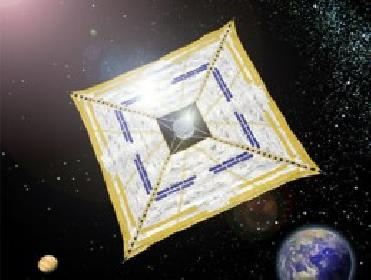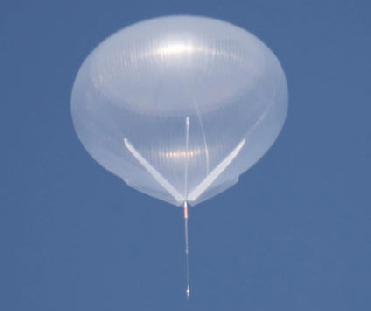
An artist's rendition of Japan's solar yacht 'IKAROS'. A JAXA Photo
TOKYO (BNS): In a first ever attempt, Japan will launch IKAROS – world's first solar powered spaceship next month.
The IKAROS – Interplanetary Kite-craft Accelerated by Radiation Of the Sun – will blast off from the Tanegashima Space Center in Japan on May 18 along with Venus climate orbiter 'AKATSUKI' on board an H-IIA F17 rocket.
The destination of the IKAROS is not specific but will be flown toward the Venus, Japanese Space agency JAXA said.
The spacecraft will be the world's first solar powered sail craft employing both photon propulsion and thin film solar power generation during its interplanetary cruise, the space agency said.
JAXA has designed the unique solar yacht which is made up of polyimide resin and is thinner than human hair – just 0.0075 mm.
Built at a cost of US$ 16 million, IKAROS will be in a short cylindrical shape during its launch and will then unfold its flexible 14-metre sail.
The spaceship will have thin film solar cells on its membrane. It will also be fitted with an altitude control device and scientific observation sensors.
The thin, light solar sail membrane will be deployed using centrifugal force of spinning the main body of the IKAROS before its tension is set.
The deployment will be in two stages. The first stage is carried out quasi-statically by the onboard deployment mechanism on the side of the main body. The second stage is the dynamic deployment. As this deployment method does not require a strut such as a boom, it can contribute to making it lighter and thus can be applied for a larger membrane.
If successful, this will be a unique achievement for any space agency to use solar energy to send a spacecraft to space.
 Previous Article
Previous Article Next Article
Next Article













The Indian Air Force, in its flight trials evaluation report submitted before the Defence Ministry l..
view articleAn insight into the Medium Multi-Role Combat Aircraft competition...
view articleSky enthusiasts can now spot the International Space Station (ISS) commanded by Indian-American astr..
view article